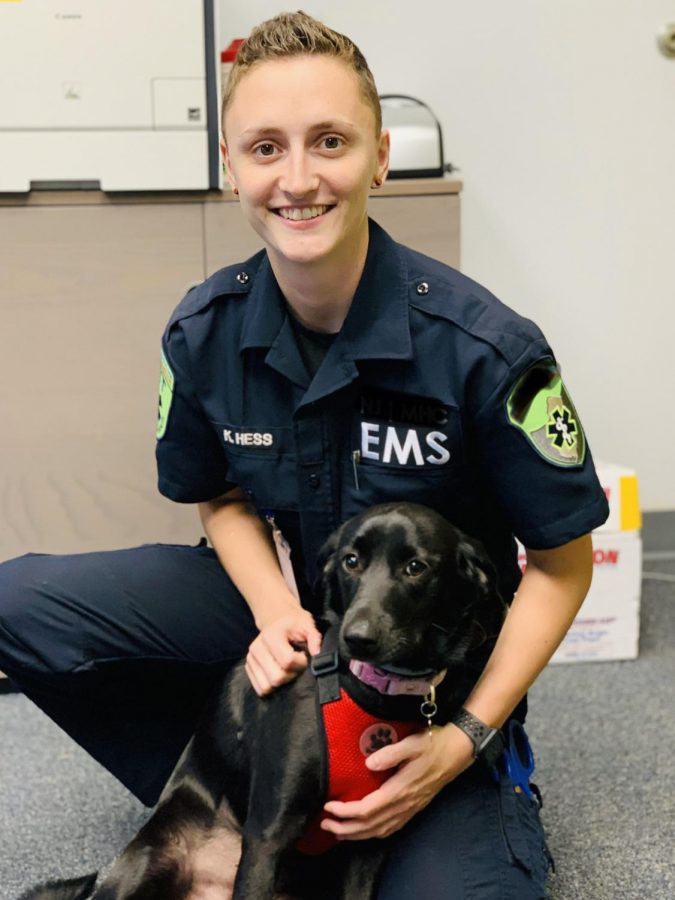Balancing emotions as an emergency medical technician (EMT)
Photo Credit: Eric Badalyan
Kailyn Hess displays her EMT uniform with her dog. As a physical education and health teacher at the middle school, she aims to use her background as an emergency medical technician (EMT) to encourage younger generations to maintain a healthy lifestyle.
October 17, 2019
Ambulance sirens filled the air with a warning. An alarm.
Emergency responders rushed out of the ambulance to the scene of the car accident, completely calm and collected. No emotions were apparent. They were only focused on the job ahead and the necessary protocol to follow.
Working as an emergency medical technician (EMT) consists of an unpredictable workday and an opportunity to treat citizens who need medical attention.
Kailyn Hess, a new physical education and health teacher at the middle school, works as an EMT in the summer for New Jersey Mobile HealthCare in Mahwah, New Jersey. In addition to working grueling 8 hour shifts, she teaches medical classes and is a supervisor and field training officer for NJ Mobile Healthcare.
Nearly every day, her job places her in contact with life-or-death situations. Overall, it is a highly stressful job that is taxing on mental toughness due to the variety of bodily injuries that occur on the job. Therefore, an important aspect of being an EMT is learning to put aside any emotions.
Being able to handle a job as an EMT requires shutting down emotions, yet the real world expects people to express emotions. This inner struggle and the need to find a perfect balance between shutting emotions down and turning them back on takes some getting used to.
“Not only do you shut [your emotions] down professionally, you also shut down in your personal life too. Because if you didn’t shut down on the job, you would never last,” Hess said.
A pivotal moment in turning those emotions back on for Hess came when she was on the job.
As she took another patient out of the ambulance and into the hospital, one of her friends also went into cardiac arrest. Her friend was on a different ambulance at the same time.
“I started turning myself back on emotionally because you realize that life is short. He was only 22,” Hess said.
The most important thing in balancing emotions as an EMT is realizing how this emotional shutdown affects other people, since sometimes it makes people distant from friends and family in their personal lives.
“It took a couple of years to find that [emotional] balance because you don’t see anything wrong with it at first,” Hess said. “People can tell you as much as they want, but nothing changes until you want to change.”
Especially as an EMT, this experience made her a more caring and empathetic person.
“It showed me that the person that I am going to on the job is someone’s friend, family member, brother, sister, daughter. It puts me in other people’s shoes again,” Hess said.
Everybody wants to know that they are in good hands and the first responders providing them with medical attention have compassion.
“They don’t want to feel like they’re just another number, or just another call that someone has to respond to,” Hess said.




